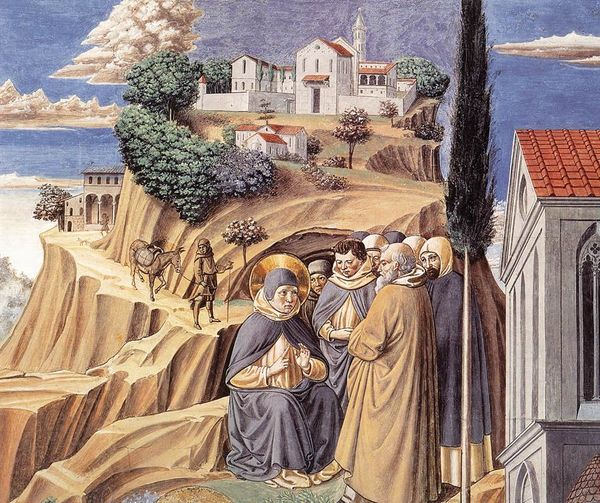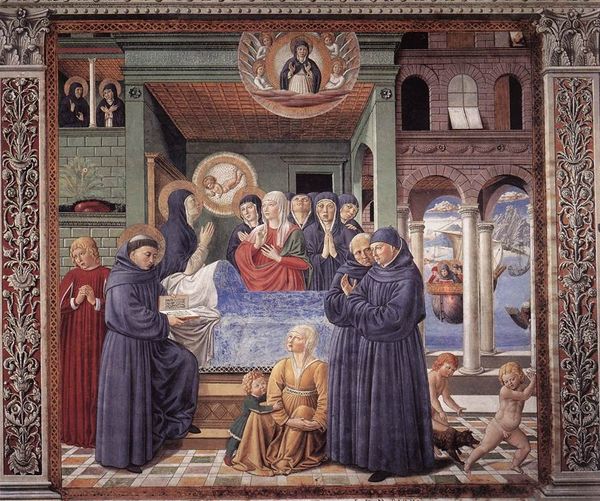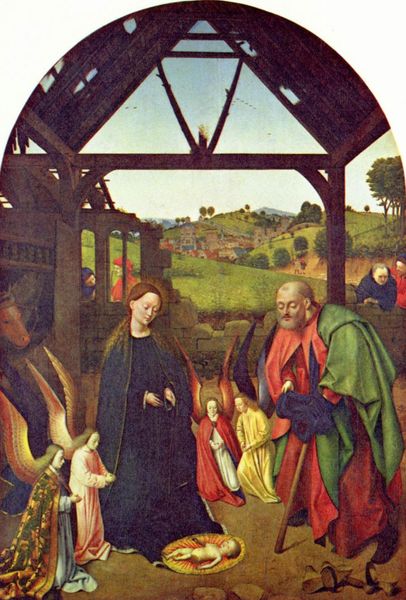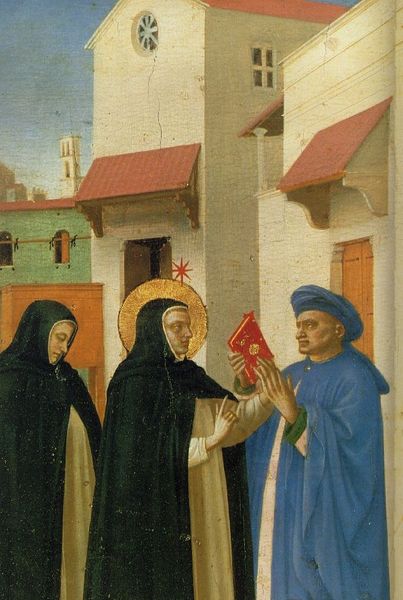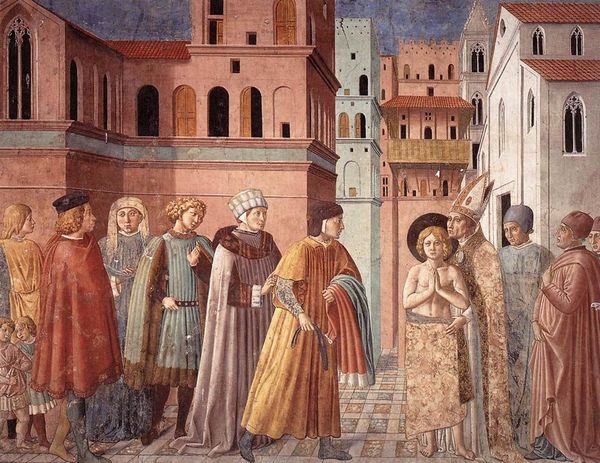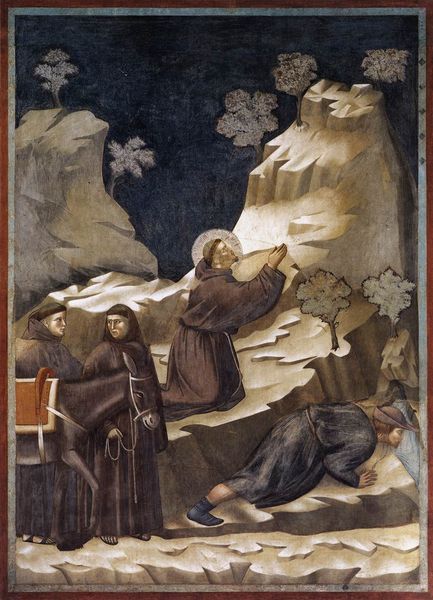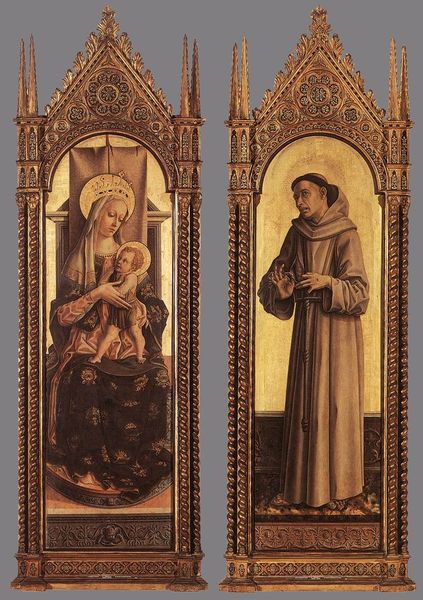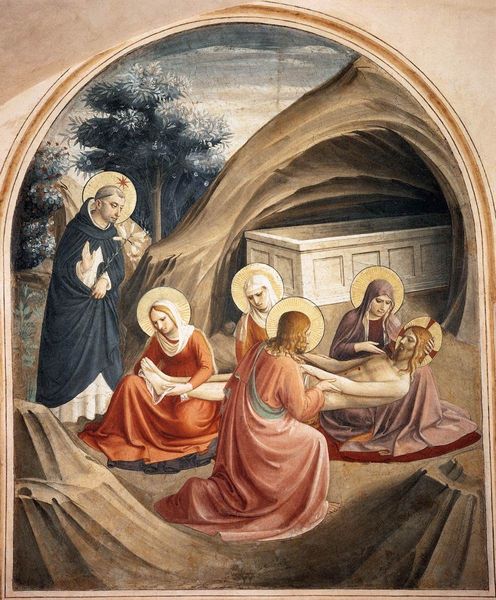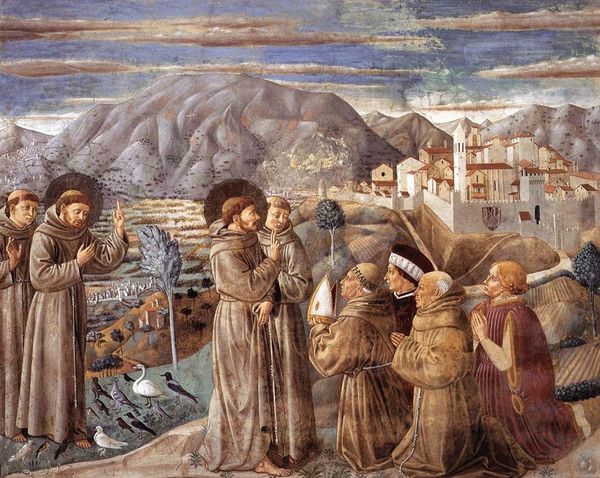
The Parable of the Holy Trinity and the Visit to the Monks of Mount Pisano 1465
0:00
0:00
benozzogozzoli
Sant'Agostino Church, San Gimignano, Italy
tempera, painting, textile, fresco
#
portrait
#
narrative-art
#
tempera
#
painting
#
sculpture
#
textile
#
holy-places
#
figuration
#
fresco
#
oil painting
#
christianity
#
history-painting
#
italian-renaissance
#
early-renaissance
#
portrait art
#
christ
Dimensions: 230 x 220 cm
Copyright: Public domain
Editor: This is "The Parable of the Holy Trinity and the Visit to the Monks of Mount Pisano," a tempera fresco by Benozzo Gozzoli from around 1465. The landscape is wonderfully serene. What jumps out at you in this work? Curator: Oh, the Gozzoli! It whispers tales, doesn’t it? To me, this piece feels like stepping into a perfectly staged dream. I'm intrigued by the narrative aspect. The scene feels simultaneously real and allegorical. Look at how Gozzoli uses landscape to frame the narrative. Do you see how the figures interact with the space, almost like actors on a stage? Editor: Yes, there’s definitely a theatrical quality. The placement of the monks, and the little baby, almost feels like different scenes in a play all happening at once. Curator: Exactly! And consider the patrons who would have commissioned this! This was meant to teach a specific moral lesson while subtly hinting at their own piety and status. Imagine being surrounded by this during service – wouldn’t that be something? Does that resonate with your ideas about the purpose of Early Renaissance art? Editor: It definitely shifts my perspective! The fresco’s richness adds depth to my understanding. It also seems to convey a sense of lived reality that's compelling, almost as if this artwork comes to life. Curator: You've pinpointed it. Gozzoli masters the art of making devotion seem… attainable. The divinity isn't lofty, but intertwined with the mundane. Something akin to daily life. A message whispered to the viewer: Heaven is within reach. And you have grasped it wonderfully, like catching moonbeams on water! Editor: What a perspective, thank you so much. This reminds me to appreciate the depth within Early Renaissance art.
Comments
No comments
Be the first to comment and join the conversation on the ultimate creative platform.
